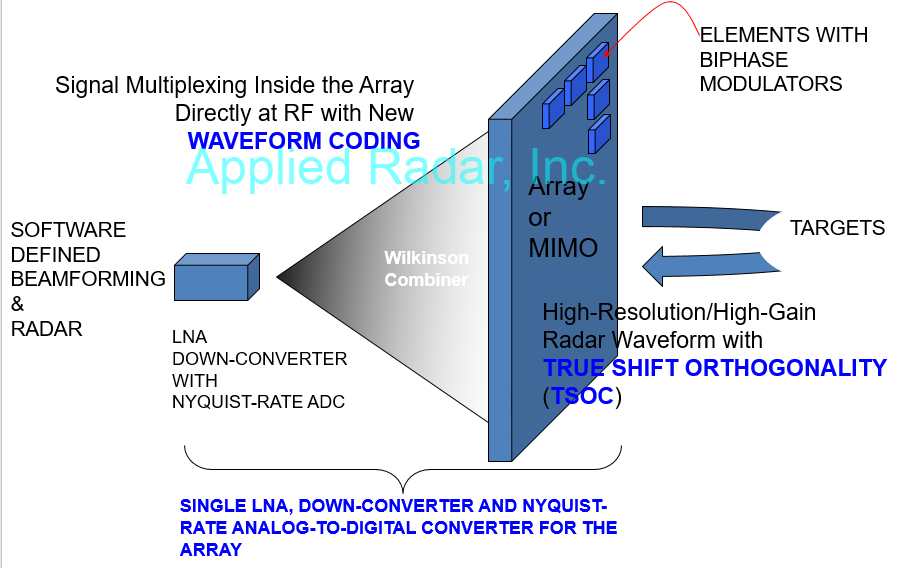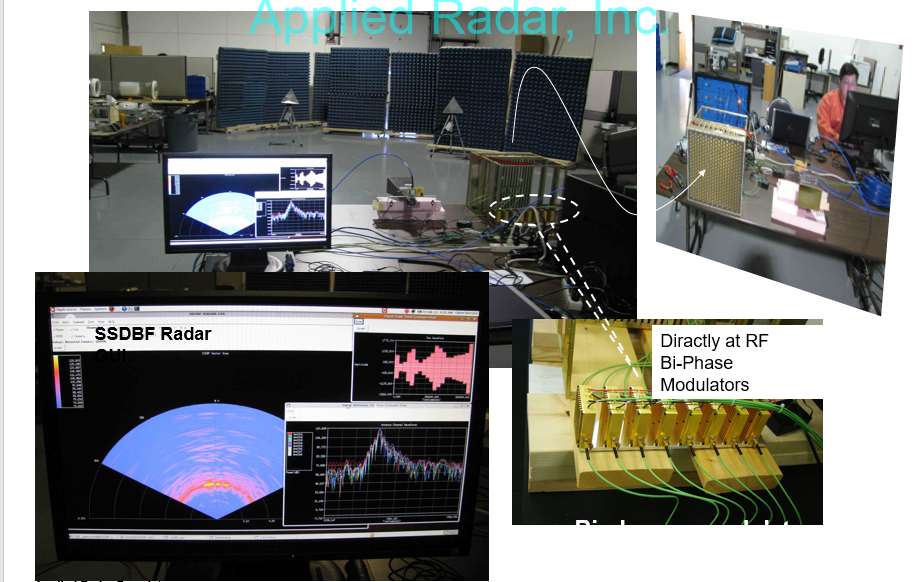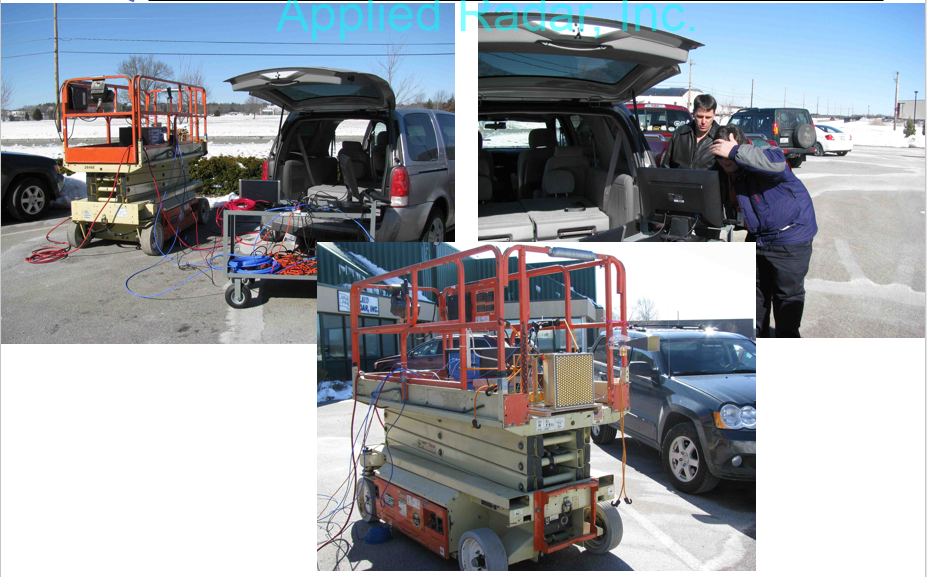Digital Beamforming is quietly revolutionizing phased array antenna systems by bringing digital technology closer to the antenna aperture. There are numerous advantages including multiple simultaneous beams, better calibrated beam shapes, and adaptive null formation for interference suppression. Applied Radar has a long history developing digital beamforming demonstration array technology dating back to early work supporting the Air Force Research Lab at Hanscom AFB, MA and later at Wright-Patterson AFB, Dayton, OH.
Wideband Multi-Channel Digital Beamforming
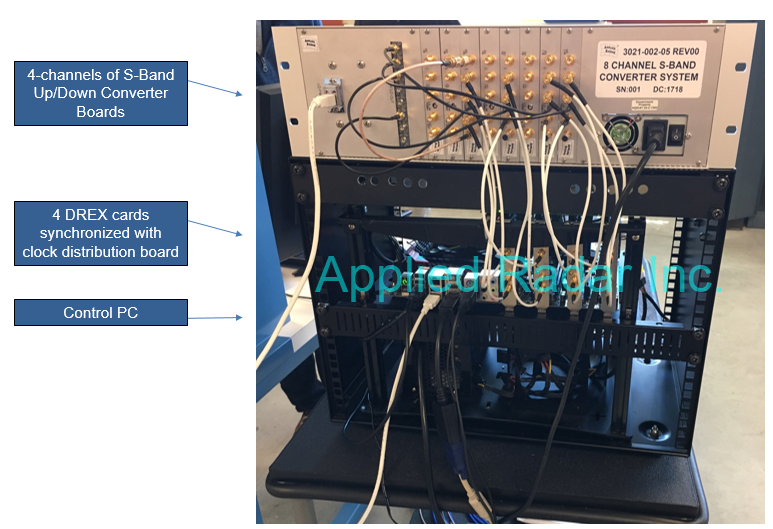
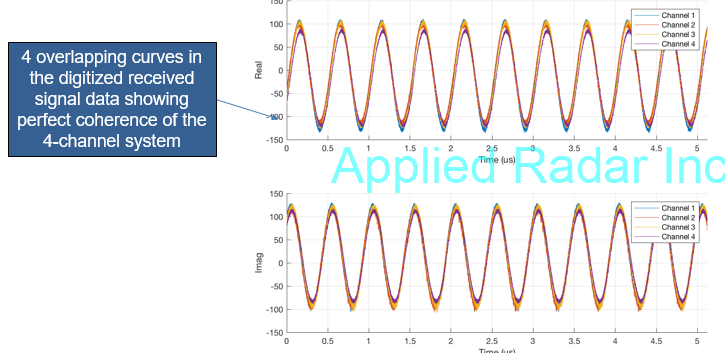
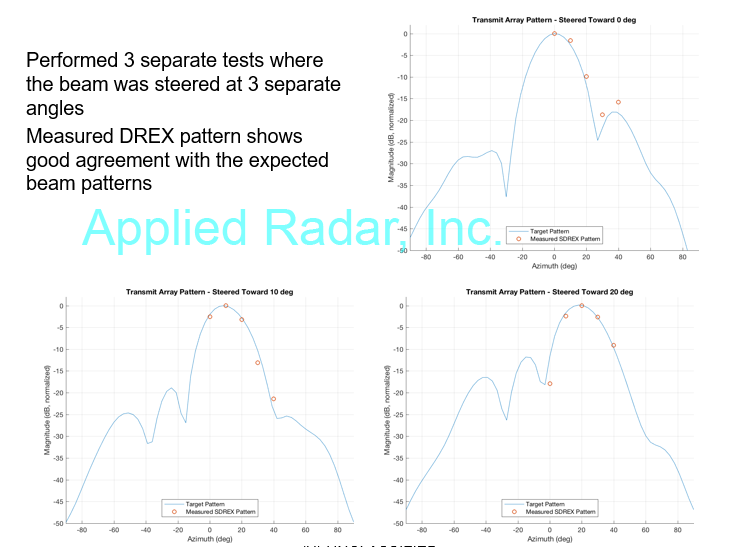
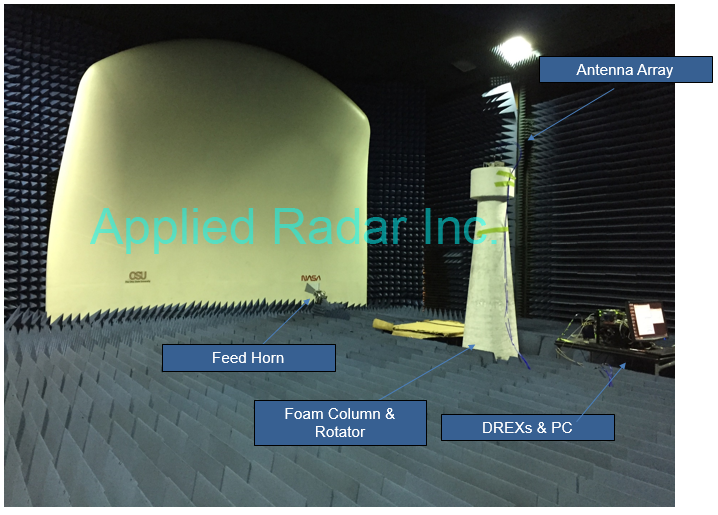
Spread-Spectrum Digital Beamforming (SSDBF)
Applied Radar has pioneered a technology which we call “Spread-Spectrum Digital Beamforming” under DARPA funding. Invented by Dr. Marcos Bergamo, the technology allows a significant cost reduction of a phased array system. By applying coded modulation to the transmit and receive signals at each element of an array, the received RF signals can be directly summed with a power combiner, and downconverted and sampled with a single ADC. We had demonstrated this in our laboratory in RI.
